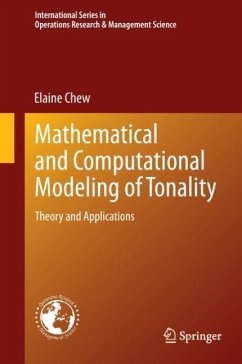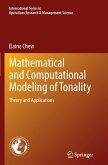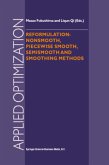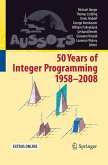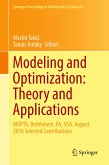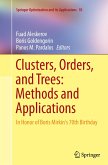From the Preface:
Blending ideas from operations research, music psychology, music theory, and cognitive science, this book aims to tell a coherent story of how tonality pervades our experience, and hence our models, of music.
The story is told through the developmental stages of the Spiral Array model for tonality, a geometric model designed to incorporate and represent principles of tonal cognition, thereby lending itself to practical applications of tonal recognition, segmentation, and visualization. Mathematically speaking, the coils that make up the Spiral Array model are in effect helices, a spiral referring to a curve emanating from a central point. The use of "spiral" here is inspired by spiral staircases, intertwined spiral staircases: nested double helices within an outer spiral.
The book serves as a compilation of knowledge about the Spiral Array model and its applications, and is written for a broad audience, ranging from the layperson interested in music, mathematics, and computing to the music scientist-engineer interested in computational approaches to music representation and analysis, from the music-mathematical and computational sciences student interested in learning about tonality from a formal modeling standpoint to the computer musician interested in applying these technologies in interactive composition and performance. Some chapters assume no musical or technical knowledge, and some are more musically or computationally involved.
Blending ideas from operations research, music psychology, music theory, and cognitive science, this book aims to tell a coherent story of how tonality pervades our experience, and hence our models, of music.
The story is told through the developmental stages of the Spiral Array model for tonality, a geometric model designed to incorporate and represent principles of tonal cognition, thereby lending itself to practical applications of tonal recognition, segmentation, and visualization. Mathematically speaking, the coils that make up the Spiral Array model are in effect helices, a spiral referring to a curve emanating from a central point. The use of "spiral" here is inspired by spiral staircases, intertwined spiral staircases: nested double helices within an outer spiral.
The book serves as a compilation of knowledge about the Spiral Array model and its applications, and is written for a broad audience, ranging from the layperson interested in music, mathematics, and computing to the music scientist-engineer interested in computational approaches to music representation and analysis, from the music-mathematical and computational sciences student interested in learning about tonality from a formal modeling standpoint to the computer musician interested in applying these technologies in interactive composition and performance. Some chapters assume no musical or technical knowledge, and some are more musically or computationally involved.
I have watched with interest and appreciation as Elaine Chew's Spiral Array model has developed over the last 15 years. It is unique in representing pitches, intervals, chords, and keys in the same elegant geometric representation. In this way, the model addresses the fundamental problem of how to represent the hierarchical nature of tonal listening. The monograph presents in-depth analyses of a wide variety of interesting musical examples as well as large-scale, quantitative tests of algorithms for key-finding, pitch spelling, and musical segmentation. The reader will be amply rewarded with mathematical and musical insights - and intrigued by the power of mathematics to reveal the inner workings of music cognition.
- Carol Lynne Krumhansl, Professor of Psychology Cornell University
"What do you mean by key?" The seemingly innocent question asked once to the author by a student initiates a fascinating scientific journey into the concept of tonality addressed through its cognitive, mathematical and computational ramifications. This essential yet accessible and entertaining book results from years of research and experimentation by one of today's prominent minds in music science, with the right balance of formal modelling, experimentation and musical knowledge, always situated in the history of ideas. The student and the professional in computation and music related domains will benefit greatly from reading this book, as well as the music lover interested in reflecting on the way we apprehend tonality.
- Gerard Assayag, Research Director, Sciences and Technologies for Music and Sound Laboratory (IRCAM, CNRS, and Pierre et Marie Curie University)
From its imaginative opening pages to its rigorous appendices, Chew's book takes the reader on an engrossing tour through the theory and applications of her ingenious multiple-helix model of musical tonality. She approaches music theory and cognition from a fresh perspective inspired by operations research, to great advantage. One comes away with the clear sense that this approach will continue to bear fruit, whether through elaboration of the underlying model or through discovery of its applicability to new practical problems. No one interested in pitch representation, computational music analysis, or music visualization should miss this important volume.
- Douglas Keislar, Editor, Computer Music Journal (MIT Press)
- Carol Lynne Krumhansl, Professor of Psychology Cornell University
"What do you mean by key?" The seemingly innocent question asked once to the author by a student initiates a fascinating scientific journey into the concept of tonality addressed through its cognitive, mathematical and computational ramifications. This essential yet accessible and entertaining book results from years of research and experimentation by one of today's prominent minds in music science, with the right balance of formal modelling, experimentation and musical knowledge, always situated in the history of ideas. The student and the professional in computation and music related domains will benefit greatly from reading this book, as well as the music lover interested in reflecting on the way we apprehend tonality.
- Gerard Assayag, Research Director, Sciences and Technologies for Music and Sound Laboratory (IRCAM, CNRS, and Pierre et Marie Curie University)
From its imaginative opening pages to its rigorous appendices, Chew's book takes the reader on an engrossing tour through the theory and applications of her ingenious multiple-helix model of musical tonality. She approaches music theory and cognition from a fresh perspective inspired by operations research, to great advantage. One comes away with the clear sense that this approach will continue to bear fruit, whether through elaboration of the underlying model or through discovery of its applicability to new practical problems. No one interested in pitch representation, computational music analysis, or music visualization should miss this important volume.
- Douglas Keislar, Editor, Computer Music Journal (MIT Press)

